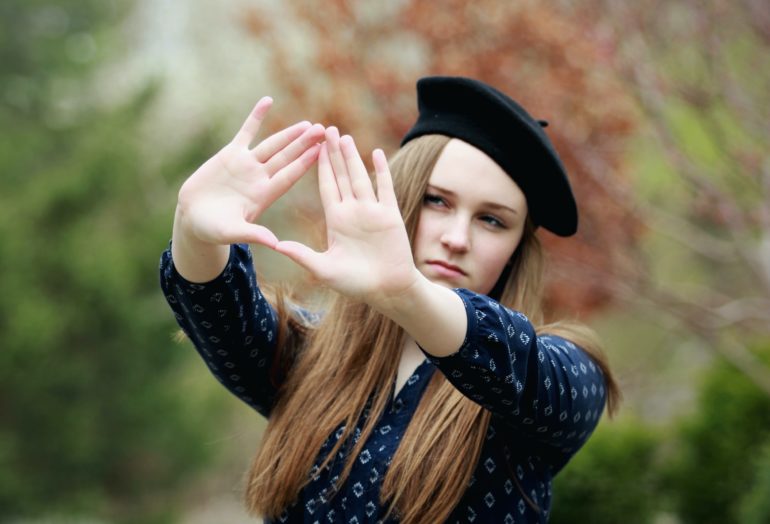Five year old friends sit cross legged on the floor. Barbie dolls, their clothes and accessories strewn around them. They share glittery sequined gowns and fake make up. They dress Barbie’s perfectly shaped body, comb the silky hair and admire the rosebud lips. Those images become indelibly planted in their brains.
At ten or younger, they toss aside the Barbie in search of themselves. They spent hours in front of the mirror, preening and accessorizing. They squeeze into shirts, sizes too small, and stick fingers down their throats in search of miniscule waists. They read teen magazines to learn more about their role model’s painful journey towards becoming thinner than Twiggy. They walk through malls with their friends looking into stores that invite them to try on clothing better suited for an older teenager.
Watch as Grade nine and ten students stream through the doors of their high school to see fourteen and fifteen year olds that look more like they’re in University. Their eyelashes heavily caked with mascara, their cheeks rosy red from more than just the cold. The midriffs reveal piercings, their ears adorn heavy hoops and their hair colour changes regularly. What’s it all about?
Our society is heavily focused on what is superficial. How beautiful we look on the outside, but seldom on how moral or altruistic we should be. I’ve watched countless television shows that focus on changing one’s appearance in order to feel better on the inside. These shows are produced for adults but are often watched by teens and younger children. You need only to skim through the pages of a glossy magazine to realize that it’s how you look that society deems most important. All these messages with which children are bombarded can only serve to affect their self image.
Most little girls love stepping into their new dance recital costume. With their hair swept up high, sheer nylons and polished shoes, they look picture perfect. But why the makeup? I have always had a hard time understanding why a six year old needs to have her eyes and lips painted in order to shine more brilliantly under the lights on stage. Children are, by nature, absolutely beautiful. What does it matter if their eyes are that much more defined as a result of eye liner or their lips that much rosier as a result of the right shade of lipstick? And what message are we sending to our daughters by painting their faces at such a young age. I am filled with a combination of repulsion and curiosity as I watch television shows such as ‘Toddlers and Tiaras.’ I am horrified by the messages that these small children are receiving from their parents who are willing to put up with their crying in spray- on-tan booths, all in the name of trying out for the title of ‘beauty queen.’
As the parent of nine and seventeen year old daughters, I struggle with what is appropriate for my teenager while trying to make sure that my nine year old does not shorten her life as a child. Don’t get me wrong. She too plays with Barbie dolls but we do talk about how most people don’t actually look that way. A few years ago when my then fourteen year old talked about putting highlights in her hair – “its my hair, why can’t I?,” I struggled again. Since I am blessed with a teen who doesn’t regularly make such requests, I wanted to allow her to express herself while still being true to my own belief that the glorious mane of hair with which she was born should be good enough. In the end, after much discussion, we negotiated a deal that allowed her to have her desires realized to a lesser extent, while still allowing me to feel that she was not doing too much too soon.
Children have many years to be adults. Childhood is so fleeting. I encourage parents to be even more aware of the messages they’re sending their children when they focus on their outer beauty, when they don’t supervise television shows or movies that are produced for adults, when they give in to every whim and desire when it comes to fashion and fancy. Let children be children.
